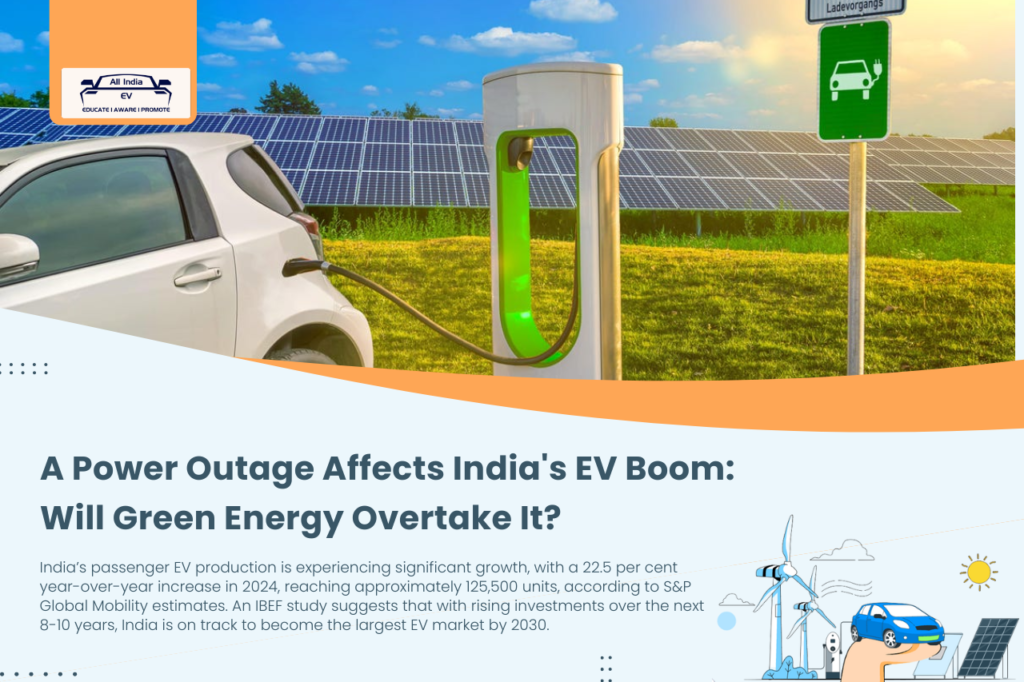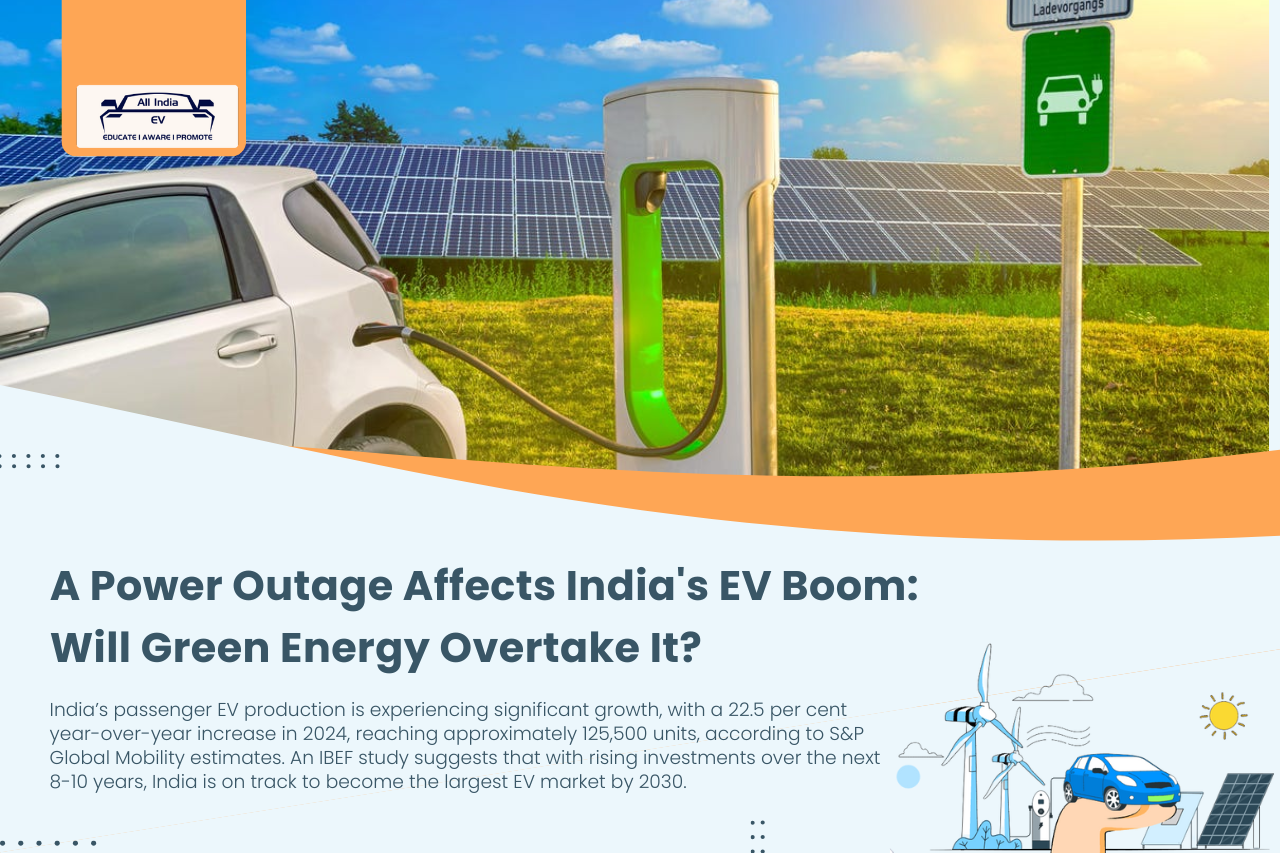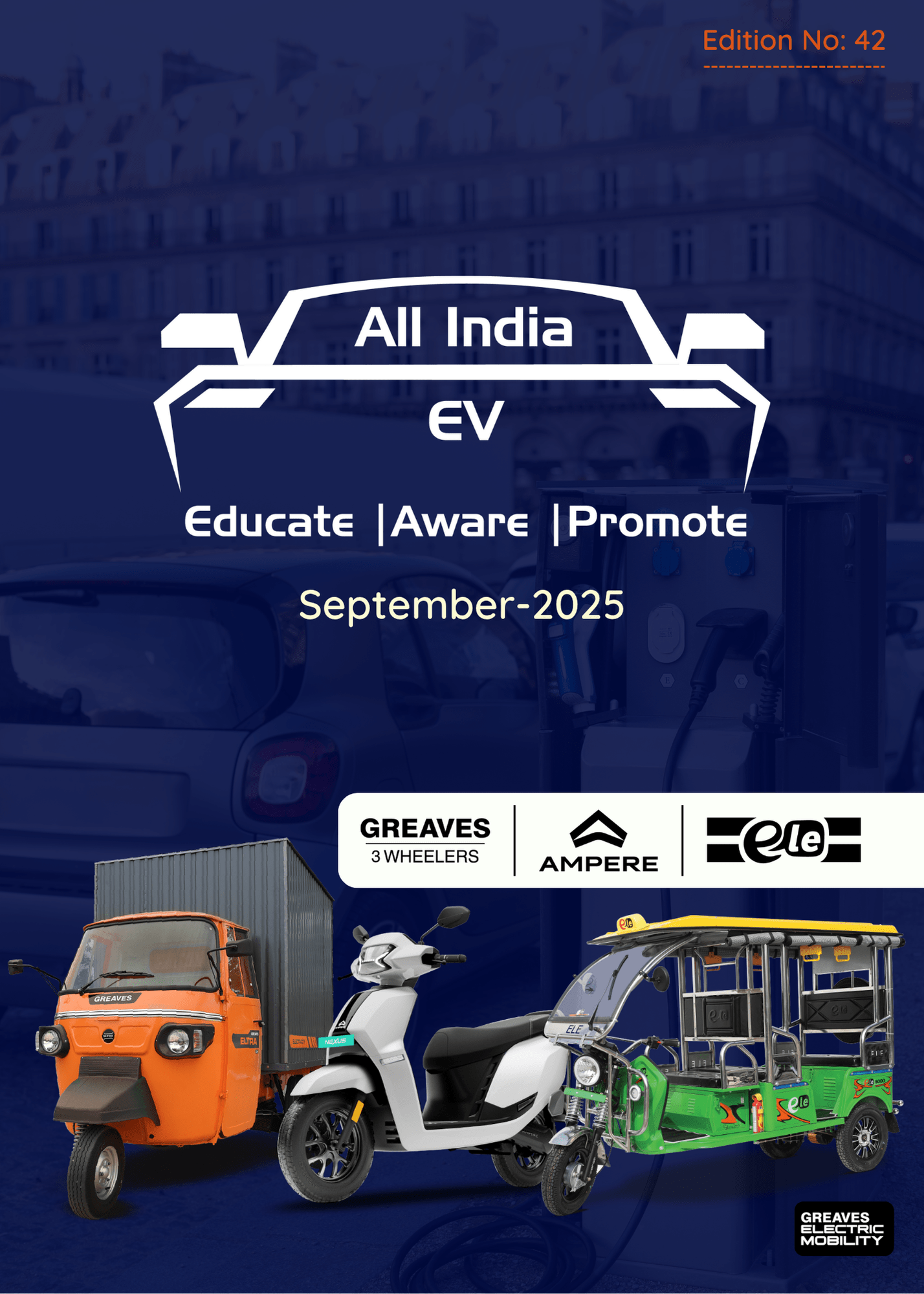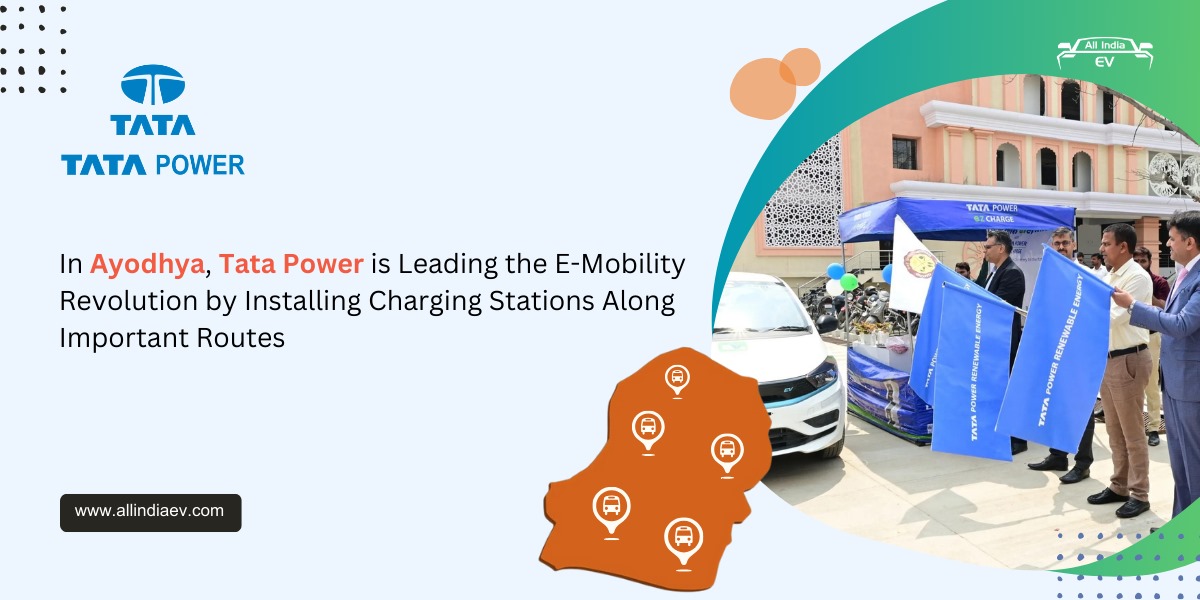
- ✅ EV Growth Amidst Energy Challenges
- ✅ The Reality of India’s Green Energy Mix
- ✅ Smart Grid Systems: The Key to Efficient Integration
- ✅ Decentralized Renewable Energy: A Game Changer for EV Charging
- ✅ Green Energy Open Access: Democratizing Renewable Power for EVs
- ✅ Meeting Peak Demand with Hybrid Energy Solutions
- ✅ The Role of Policy in Strengthening India’s EV Future
- ✅ The Road Ahead: India’s Path to a Sustainable EV Future
India EV: India’s Rapid EV Growth Faces Green Energy Hurdles
India’s electric vehicle (EV) market is growing rapidly, but concerns over renewable energy integration and grid stability present significant challenges. Ensuring a sustainable EV ecosystem requires a strong push towards clean energy solutions.
✅ EV Growth Amidst Energy Challenges
According to S&P Global Mobility estimates, India’s passenger EV production surged 22.5% year-over-year in 2024, reaching approximately 125,500 units. An IBEF report projects that India could become the largest EV market by 2030. The Indian EV battery market, valued at USD 16.77 billion, is expected to grow to USD 27.70 billion by 2028.
Is India’s EV Transition Truly Green?
While EVs offer a cleaner alternative to fossil-fuel-powered vehicles, their environmental benefits depend on the source of electricity used for charging. If the majority of EVs run on coal-based energy, the net carbon savings are significantly reduced. This highlights the urgent need for a robust renewable energy infrastructure to truly support India’s green mobility goals.
✅ The Reality of India’s Green Energy Mix
As of January 31, 2025:
- 46.3% of India’s electricity comes from renewable sources.
- 47.29% of the national grid still relies on coal-based power.
- Only one-third of EVs in India are currently charged using clean energy.
Beyond power generation, grid inefficiencies (such as double-digit transmission and distribution losses) pose another major hurdle. Without immediate action, these inefficiencies could slow down India’s EV revolution.
✅ Smart Grid Systems: The Key to Efficient Integration
The government’s Smart Grid Mission aims to modernize India’s electricity network through automation, communication, and IT solutions. Experts recommend integrating battery storage and vehicle-to-grid (V2G) technology to manage fluctuations in renewable energy availability.
Expert Insights
- Devansh Jain, Chair of the Wind Energy Committee at PHDCCI, suggests implementing time-of-use pricing and AI-driven demand forecasting to optimize EV charging during peak renewable energy generation hours.
- Rakesh Jha, Partner at BDO India’s Energy Sector Solutions, emphasizes the role of government incentives in supporting storage integration and smart grid development.
✅ Decentralized Renewable Energy: A Game Changer for EV Charging
Decentralized renewable energy (DRE) systems, such as solar, wind, and biomass power, can improve EV charging accessibility, especially in rural and semi-urban areas.
Key Benefits of Decentralized EV Charging
- Reduced dependence on centralized grids
- Lower transmission losses
- Improved energy resilience
- Cost savings on electricity
- Job creation and community-driven solutions
Jain highlights that solar-powered EV charging stations can significantly reduce operational costs and provide stable power in remote areas.
✅ Green Energy Open Access: Democratizing Renewable Power for EVs
Experts advocate for Green Energy Open Access, allowing EV charging operators to procure renewable electricity directly from generators. This model bypasses traditional utility monopolies, ensuring cost-efficient green energy supplies.
By removing regulatory barriers, this approach accelerates India’s transition to a decentralized and cleaner energy ecosystem.
✅ Meeting Peak Demand with Hybrid Energy Solutions
India’s peak electricity demand occurs in the evening, while solar energy production peaks during the day. To balance this mismatch, experts suggest integrating:
- Solar and wind energy
- Battery storage systems
- Pumped storage plants (PSP)
- Predictive algorithms for charging optimization
Strategic Charging Infrastructure Placement
Jain emphasizes that placing charging stations in locations with complementary energy sources will improve grid stability and reliability.
✅ The Role of Policy in Strengthening India’s EV Future
Government incentives and strong policies are crucial for promoting renewable-powered EV charging infrastructure.
Vehicle-to-Grid (V2G) Technology: A Game Changer
Jha points out that V2G technology can enhance grid stability by allowing:
- EVs to store excess renewable energy during high production periods.
- EVs to supply power back to the grid during low production periods.
- Bidirectional energy flow for optimal renewable energy utilization.
✅ The Road Ahead: India’s Path to a Sustainable EV Future
While India’s EV market continues to grow, ensuring a truly sustainable transition depends on:
- A cleaner energy grid
- Enhanced energy storage solutions
- Grid modernization efforts
- Supportive government policies
With strategic investments and policy reforms, India has the potential to create a self-sustaining EV ecosystem that sets a global benchmark for clean mobility.










